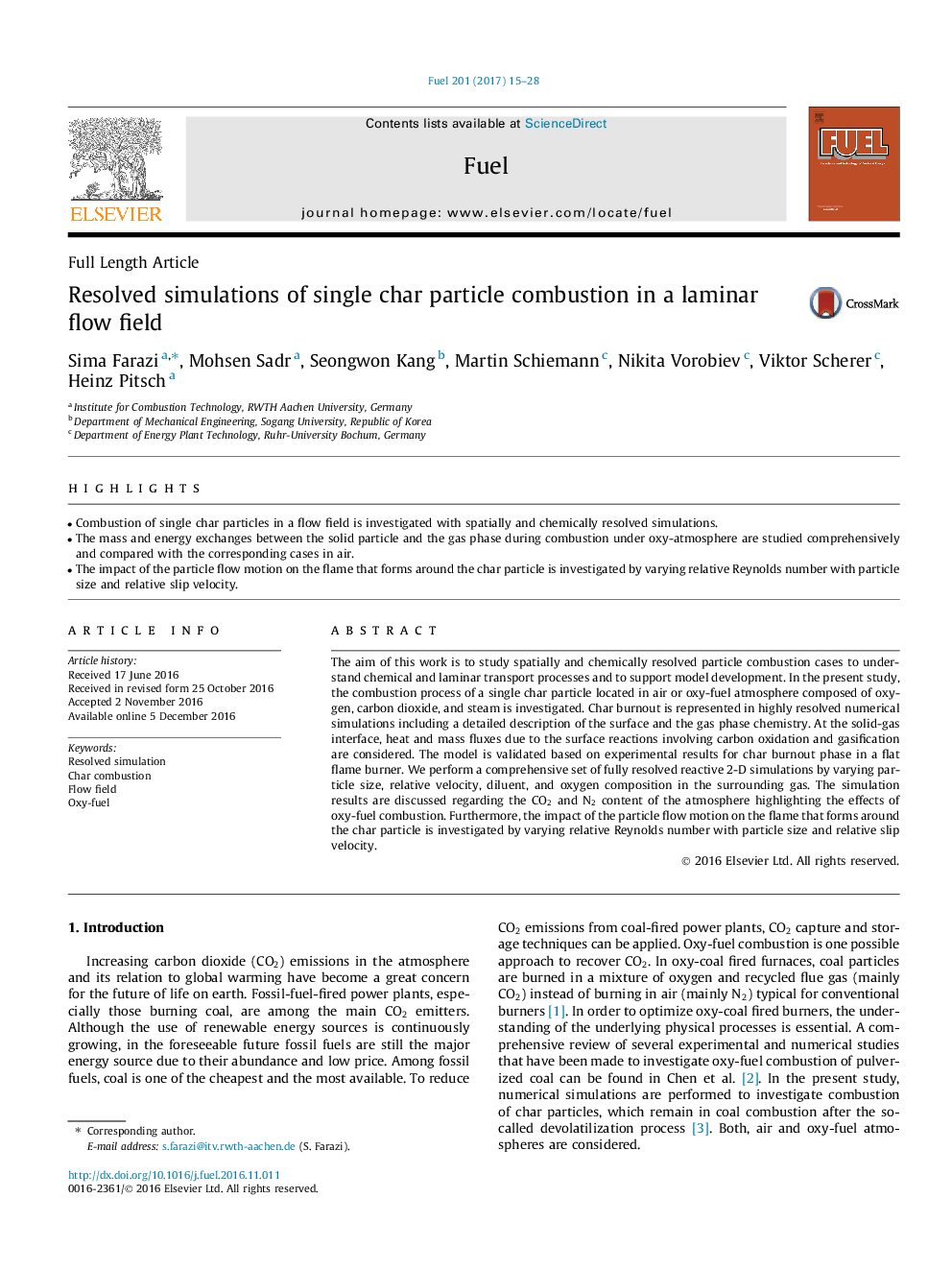| Article ID | Journal | Published Year | Pages | File Type |
|---|---|---|---|---|
| 6473647 | Fuel | 2017 | 14 Pages |
â¢Combustion of single char particles in a flow field is investigated with spatially and chemically resolved simulations.â¢The mass and energy exchanges between the solid particle and the gas phase during combustion under oxy-atmosphere are studied comprehensively and compared with the corresponding cases in air.â¢The impact of the particle flow motion on the flame that forms around the char particle is investigated by varying relative Reynolds number with particle size and relative slip velocity.
The aim of this work is to study spatially and chemically resolved particle combustion cases to understand chemical and laminar transport processes and to support model development. In the present study, the combustion process of a single char particle located in air or oxy-fuel atmosphere composed of oxygen, carbon dioxide, and steam is investigated. Char burnout is represented in highly resolved numerical simulations including a detailed description of the surface and the gas phase chemistry. At the solid-gas interface, heat and mass fluxes due to the surface reactions involving carbon oxidation and gasification are considered. The model is validated based on experimental results for char burnout phase in a flat flame burner. We perform a comprehensive set of fully resolved reactive 2-D simulations by varying particle size, relative velocity, diluent, and oxygen composition in the surrounding gas. The simulation results are discussed regarding the CO2 and N2 content of the atmosphere highlighting the effects of oxy-fuel combustion. Furthermore, the impact of the particle flow motion on the flame that forms around the char particle is investigated by varying relative Reynolds number with particle size and relative slip velocity.
